The average commute time in Toronto has risen to 65.6 minutes, and as a result we are seeing more patients with back pain injuries caused by poor car ergonomics. Adjusting your car seat correctly can help reduce the pressure on your lower back and make your ride more comfortable.
The ergonomics of sitting in a car seat are not the same as sitting at a desk. When grasping the steering wheel of a car your arms are raised higher than they would be at a desk. To operate the pedals you have to extend your legs further out which can cause stress on the lower back. When driving, your body experiences vibrational stresses and sideways forces, which can cause muscle injury if your seat is not adjusted correctly.
Here is a great article from the website Wikihow (Link Here). Below is a summary of the main adjustment recommendations:
1. Make sure you sit straight and that your buttocks and back are square and completely squeezed into the seat. This helps to avoid backaches, possible back injuries and maintains awareness during long drives.
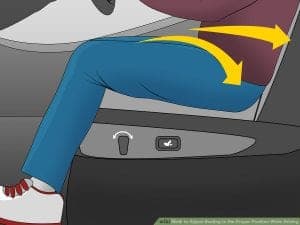
2. Adjust the seat distance. The seat should always be positioned with regard to the pedals. Press the brake pedal fully with your right foot and fully depress the clutch (in a manual transmission car) or dead pedal (in an automatic). The distance should be adjusted so that with fully depressed pedals, your knees remain slightly bent (about 120 degrees).
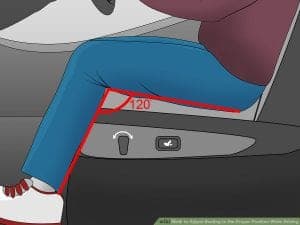
3. Adjust the rake of the seat. This should be as parallel as possible to the steering. It is impossible to reach a perfect adjustment (and it’s also not really necessary), but by adjusting the rake of the seat to an upright angle of about 110-95 degrees, we can reach a suitable adjustment.
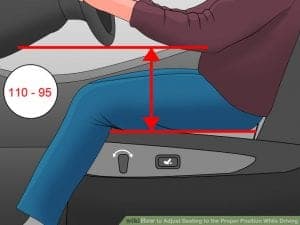
4. Adjust the steering height. Where adjustable, the steering height should be adjusted to as parallel to back angle, and to a clear view of the dashboard through the rim. The ideal adjustment should also allow us to grip the wheel properly (at 9 and 3, see below), with our palms just lower than our shoulders.
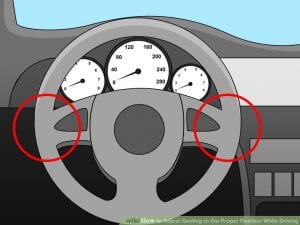
5. Adjust the steering distance. Where adjustable, this should be adjusted with the steering wheel height, to as parallel to the back as possible. While gripping the wheel properly, our elbows should be bent at about 120 degrees. There should be a minimal clearance of 10″ (and preferably 30cm) between the center of the steering hub and the base of the breastbone (sternum). It should also not be further away that 45 centimeter (17.7 in).

6. Adjust the head restraints. Place the headrest to a height just above your eyelids, and (more importantly) — as close to the head as possible (2-3cm). A head-restraint further than 7 centimeter (2.8 in) increases the risk of whiplash. Keep in mind that while driving our head bends forward a bit more. If you cannot adjust the head-restraint to the proper distance, you need to compensate by increasing the backrest tilt.
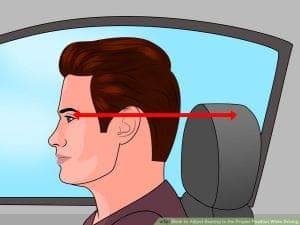
5. Wear your seat belt properly. Adjust the lap-belt as snugly as possible over the waist. The belt should be physically tightened and placed as low as possible, on the pelvic bones, rather than the soft belly.

Remember to take the time to adjust the seat and mirrors before you head out on the road, a little prevention can go a long way!
References:
http://www.wikihow.com/Adjust-Seating-to-the-Proper-Position-While-Driving